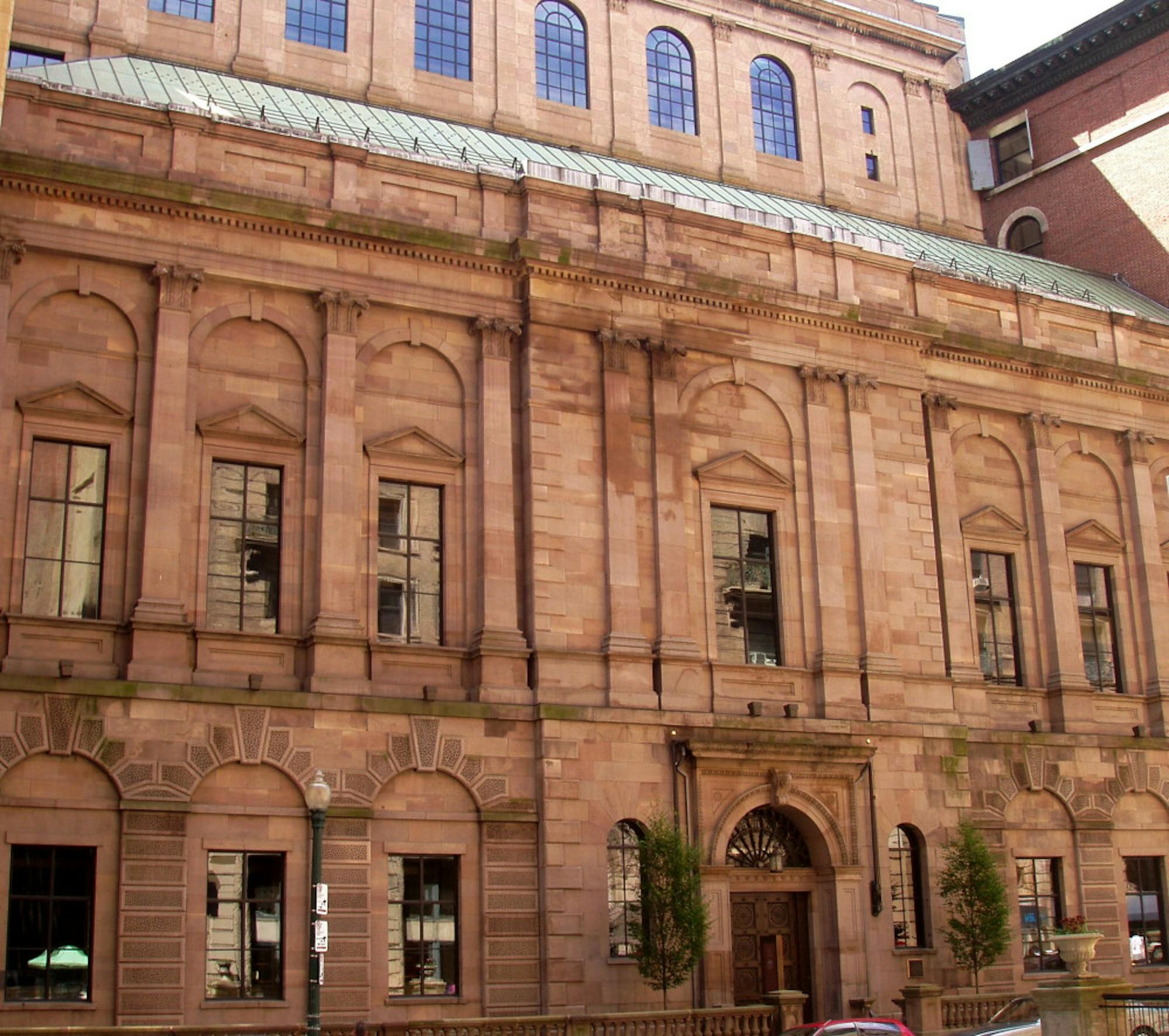The Boston Athenæum was founded in 1807, when the United States was still in the early stages of its Republic. While the Athenæum has made efforts to bring the institution into the modern age, it would be difficult to enter its first floor and not feel transported back into the past. Probably the two largest and most striking sculptures one encounters upon meandering the first floor are of Athena, the Greek goddess of wisdom and military victory and George Washington, whom some might consider the closest figure the United States has to a god. With Washington’s birthday just around the corner, the Athenæum can serve as a kind of sanctuary to the values this country was founded on. In the midst of the nation's current instability, as proven by National Security Adviser Michael Flynn’s resignation, the Athenæum serves as a type of looking glass that could possibly show visitors how the nation got to this point and what it has lost sight of along the way.
David Dearinger, the Athenæum's Susan Morse Hilles senior curator of paintings and sculpture, co-authored “Acquired Tastes: 200 Years of Collecting for the Boston Athenæum" with Stanley Cushing, the Anne C. and David J. Bromer curator of rare books and manuscripts, to celebrate the Athenæum's 200th anniversary in 2007.
"[In] 1807, when the Athenæum was founded … the U.S. government, then as now, was reluctant to fund the arts, and many people in a position to know were pessimistic about cultural prospects," Dearinger wrote. "Despite this rather depressing prospect, the leaders of the Athenæum were apparently willing to step into the breach, and in their own way, take on the cultural challenge.”
Slowly but surely, the Athenæum began collecting medals and coins as well as fine plaster casts of Renaissance originals. What many people do not know about the beginning of museums is the use of casts in place of originals. Casts were seen as a means of being able to learn first hand about any work of art. The pedagogical use of casts was central to the Athenæum's founding values, as it was an educational institution where the first American generation unconcerned with war could become connoisseurs. Dearinger wrote about how the Athenæum collected casts through the 19th century, but in a wave of expansion in 1822, the Athenæum commissioned its first work of contemporary art, Annibale Carracci's "Portrait of a Man" (1592).
Many of the Athenæum's great works can be seen today at the Museum of Fine Arts in Boston, but unfortunately, this movement of artwork has caused the Athenaeum to lose much of its traffic. According to Dearinger in "Acquired Tastes," although the Athenæum has collected art and collects 10 new works a year, the building has retained the feeling of a library, with paintings and sculptures placed among rows and rows of books. Twice a year, the Athenæum puts on an exhibition featuring works from their collection. The current exhibition, “Daniel Chester French: The Female Form Revealed,” ends on Feb. 19 and features the work of Daniel Chester French, the most prominent monument sculptor of the late 19th and early 20th century.
The Boston Athenæum has made many attempts to bring itself into the 21st century. However, the beautiful architecture and works of art, reminiscent of a much earlier United States, create the compelling ambience that draws visitors and members alike to the Athenæum. There is no other place in the world where visitors can look at Neoclassical sculptures by the great Odin overlooking Paul Revere’s grave. The historical gravitas of the Athenæum is what makes it exceptional. It is a gem of the past, a reminder that those who did not know what would happen to this nation or its people still strived to make something beautiful. They went beyond what was worth knowing and also recognized that some things are worth seeing.
Boston Athenæum provides a gateway into a newly-founded United States






